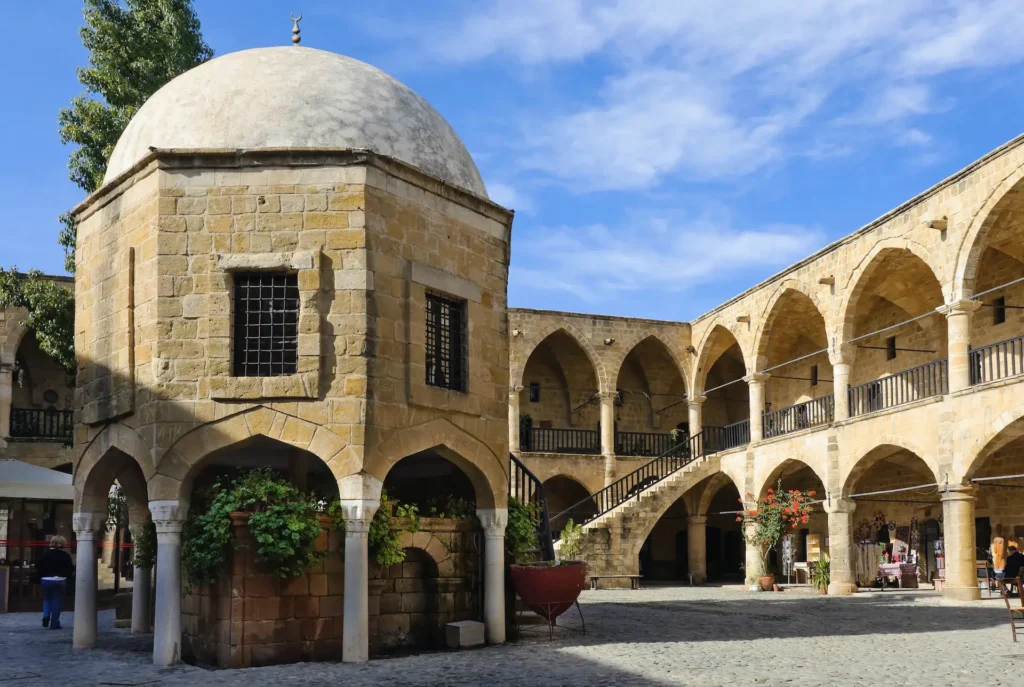Explore the rich and complex history of North Cyprus, from ancient civilizations to modern-day TRNC. Your complete guide to North Cyprus heritage.

The history of North Cyprus stretches back over 10,000 years, layered with the legacies of ancient empires, crusader knights, Ottoman rulers, and modern political conflict. Today, the Turkish Republic of Northern Cyprus (TRNC) represents not just a geographical region, but a living museum of Mediterranean heritage and cultural complexity.
In this complete guide to North Cyprus history, we’ll walk you through the key periods, historic landmarks, and the events that shaped the region as we know it today.
🗿 Prehistoric & Ancient Cyprus
Evidence of human settlement in Cyprus dates back to 8000 BCE. In the north, archaeological sites such as:
- Vouni Palace (near Güzelyurt)
- Salamis Ancient City (Famagusta)
- Tombs of the Kings (near Kyrenia)
…reveal the influence of early Greek, Phoenician, and Persian civilizations.
Salamis, once the island’s leading city, was a major cultural and commercial center in antiquity. Today, its sprawling ruins are one of the most impressive historical sites in the Eastern Mediterranean.
⚔️ Byzantine & Crusader Era
Following the Roman Empire’s division, Cyprus became part of the Byzantine Empire. Christianity spread across the island, and many early churches were built during this time.
In 1191, Richard the Lionheart of England captured Cyprus on his way to the Third Crusade. He sold the island to the Lusignan dynasty, who ruled until the Venetians took over in the 15th century.
From this period remain:
- Othello Castle (Famagusta) – tied to Shakespeare’s play
- St. Hilarion Castle – a fairytale-like fortress in the Kyrenia mountains
- Bellapais Abbey – a gothic masterpiece near Kyrenia
🕌 Ottoman Rule (1571–1878)
The Ottoman Empire conquered Cyprus in 1571, ending Venetian rule and shaping the region’s cultural identity. Under the Ottomans:
- Many Gothic churches were converted into mosques (like Selimiye Mosque in Nicosia)
- The Turkish Cypriot community was established
- Islamic architecture and traditions became part of daily life
The Ottoman legacy remains strong in North Cyprus, seen in its cuisine, religious sites, and village structures.
🇬🇧 British Colonial Period (1878–1960)
In 1878, the Ottomans leased Cyprus to Great Britain, which later annexed the island in 1914. The British introduced:
- New administrative systems
- English education
- Infrastructure projects like railways and government buildings
Despite modernization, tensions grew between the island’s Greek and Turkish Cypriots, each with different national aspirations.
⚠️ Division of the Island: Cyprus Conflict & TRNC
After Cyprus gained independence in 1960, ethnic tensions between Greek and Turkish Cypriots escalated. A Greek-led coup in 1974 aimed to unite Cyprus with Greece, prompting a Turkish military intervention in the north.
This led to the division of the island:
- North Cyprus became self-governing
- In 1983, it declared independence as the Turkish Republic of Northern Cyprus (TRNC)
- The TRNC is recognized only by Türkiye, but maintains its own government, institutions, and growing tourism sector
🏙️ Preserving Northern Cyprus Heritage
Today, North Cyprus is actively preserving and promoting its diverse heritage, including:
- Restoring castles, monasteries, and mosques
- Hosting cultural festivals and archaeological exhibitions
- Promoting awareness of both Turkish and shared Cypriot history
Historic cities like Famagusta, Kyrenia, and Nicosia showcase this unique blend of ancient and modern identity.
🧭 Where to Experience North Cyprus History
If you’re visiting and want to dive into the island’s past, don’t miss:
🔹 Salamis Ruins (Famagusta)
A Roman-era city with amphitheaters, baths, and columns by the sea.
🔹 St. Hilarion Castle
Perched in the mountains, offering history and breathtaking views.
🔹 Büyük Han (Nicosia)
An Ottoman-era inn turned arts and cultural center.
🔹 Kyrenia Castle & Shipwreck Museum
Combining Crusader and Ottoman legacies in one fortress.
🔹 Varosha Ghost Town (Famagusta)
A modern historical landmark frozen in time since 1974.
💡 Why North Cyprus History Matters
Understanding North Cyprus history helps travelers:
- Appreciate the region’s cultural diversity
- Respect the complexity of its political situation
- See beyond the beaches and explore its ancient soul
The past here is not hidden — it’s alive in every stone wall, minaret, and castle gate.
🌞 Final Thoughts
The history of North Cyprus is as layered and fascinating as its landscape. From ancient ruins to divided streets, every corner tells a story of conquest, coexistence, and cultural resilience.
Whether you’re a curious traveler, a student of history, or simply someone who wants to go beyond the typical tourist path, North Cyprus offers a rich and unforgettable journey through time. northcyprusinvesting.com, Investra.io


